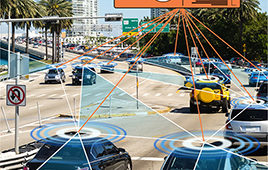 Women lag behind men in the lucrative computer science and technology industries, and one of the possible contributors to this disparity is that they’re less likely to enroll in introductory computer science courses. However, a new study of 270 high school students shows that three times as many girls were interested in enrolling in a computer science class if the classroom was redesigned to be less “geeky” and more inviting.
Women lag behind men in the lucrative computer science and technology industries, and one of the possible contributors to this disparity is that they’re less likely to enroll in introductory computer science courses. However, a new study of 270 high school students shows that three times as many girls were interested in enrolling in a computer science class if the classroom was redesigned to be less “geeky” and more inviting.
The results, by University of Washington researchers, reveal a practical way for teachers to help narrow the gender gap in computer science by helping girls feel that they belong.
“Our findings show that classroom design matters — it can transmit stereotypes to high school students about who belongs and who doesn’t in computer science,” said lead author Allison Master, a post-doctoral researcher at the UW’s Institute for Learning & Brain Sciences (I-LABS).
The Journal of Educational Psychology published the study online August 17, 2015.
- Read more: How Do We Get More Kids into STEM?
“This is the earliest age we’ve looked at to study stereotypes about computer science,” Master said. “It’s a key age group for recruitment into this field, because girls in their later adolescence are starting to focus on their career options and aspirations.”
Co-authors of the paper are Sapna Cheryan, a UW associate professor of psychology, and Andrew Meltzoff, co-director of I-LABS. The National Science Foundation funded the research.
“Identity and a sense of belonging are important for adolescents,” Meltzoff said. “Our approach reveals a new way to draw girls into pipeline courses. It is intriguing that the learning environment plays such a significant role in engaging high school girls in computer science.”
- Read more: How Do We Keep Students in STEM
In the study, high school boys and girls (aged 14 to 18 years) completed questions about:
- their interest in enrolling in a computer science class
- their sense of belonging in a computer science class
- how much they thought they personally “fit” the computer science stereotype
Then, the UW team showed the students photos of two different computer science classrooms decorated with objects that represented either the “geeky” computer science stereotype, including computer parts and Star Trek posters, or a non-stereotypical classroom containing items such as art and nature pictures.
Students had to say which classroom they preferred, and then answered questions about their interest in enrolling in a computer science course and their thoughts and feelings about computer science and stereotypes.
Girls (68 percent) were more likely than boys (48 percent) to prefer the non-stereotypical classroom. And girls were almost three times more likely to say they would be interested in enrolling in a computer science course if the classroom looked like the non-stereotypical one.
Boys didn’t prefer one classroom’s physical environment over the other, and how the classroom looked didn’t change boys’ level of interest in computer science.
“Stereotypes make girls feel like they don’t fit with computer science,” Master said. “That’s a barrier that isn’t there for boys. Girls have to worry about an extra level of belonging that boys don’t have to grapple with.”
Previously, the UW team reported that inaccurate negative cultural stereotypes about computer science deterred college-age women from the field and that altering stereotypes can increase girls’ interest.
The researchers say that changing computer science stereotypes to make more students feel welcome in high school classrooms would help recruit more girls to the field, which has one of the lowest percentages of women among STEM fields.
“Our new study suggests that, if schools and teachers feel they can’t recruit girls into their computer science classes,” Master said, “they should make sure that the classrooms avoid stereotypes and communicate to students that everyone is welcome and belongs.”




